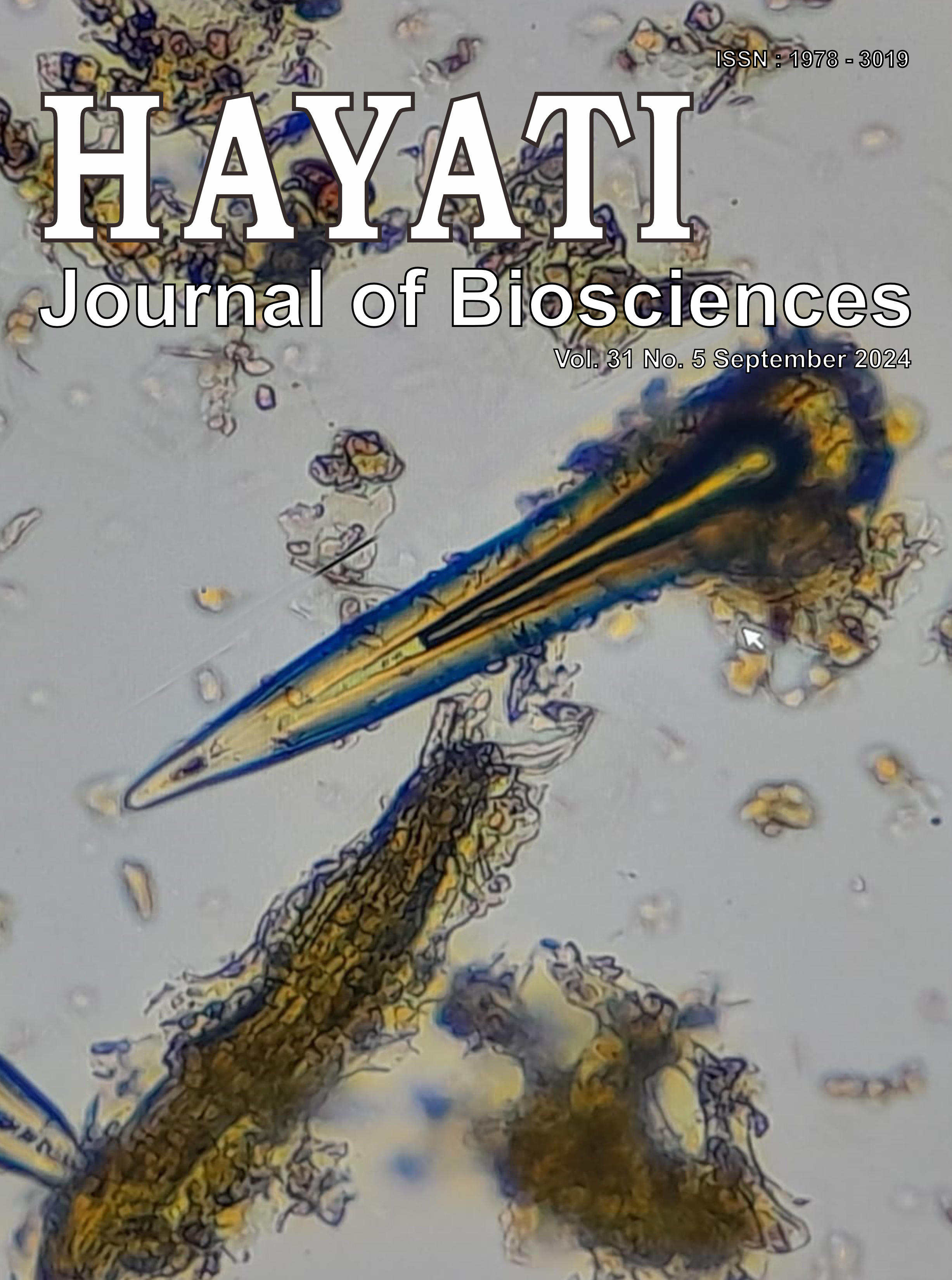In Silico Study, Design, and Expression of an Intranasal Dual Chimeric Vaccine for Indonesian-Based Norovirus GII-2 and Hepatitis B
Abstract
Hepatitis B virus (HBV) remains an important healthcare challenge, leading to liver diseases like cirrhosis and cancer. In response, we created a prophylactic and therapeutic HBV vaccine by integrating HBcAg and HBsAg from HBV genotype B into Norovirus (NoV) GII.2 P domain (PdomGII.2-HBV) for enhanced intranasal delivery. This vaccine also aimed to simultaneously prevent NoV infection, which causes gastroenteritis. Since the selected HBV epitopes have undergone extensive research and are tailored to the Indonesian population, this study focused on identifying NoV epitopes and assessing T cell epitopes coverage of the PdomGII.2-HBV for the Indonesian population. Following that, we expressed the PdomGII.2-HBV protein using Escherichia coli BL21(DE3) and employed a gentle solubilization technique for protein purification. Our in-silico analysis identified two B cell epitopes, along with 15 CD4+T cell epitopes and 35 CD8+T cell epitopes within the GII.2 P domain. These T cell epitopes cover 100% of the Javanese-Sundanese population's HLA allele variations, which constituted the largest demographic group in Indonesia. Subsequently, we successfully purified the presumed PdomGII.2-HBV protein, revealing a molecular weight of 39.5 kDa. Following the successful expression and purification of the presumed PdomGII.2-HBV protein, it is evident that this vaccine design has significant potential, warranting further study.
Downloads
Copyright (c) 2024 Ernawati Arifin Giri-Rachman, Marselina Irasonia Tan, Novia Syari Intan, Putri Ayu Fajar, Gladys Emmanuella Putri Wojciechowska, Rukman Hertadi, Debbie Soefie Retnoningrum

This work is licensed under a Creative Commons Attribution-NonCommercial 4.0 International License.
HAYATI J Biosci is an open access journal and the article's license is CC-BY-NC. This license lets others distribute, remix, tweak, and build upon author's work, as long as they credit the original creation. Authors retain copyright and grant the journal/publisher non exclusive publishing rights with the work simultaneously licensed under a https://creativecommons.org/

























.png) IPB University
IPB University Department of Biology
Department of Biology The Indonesian Biological Society
The Indonesian Biological Society 

